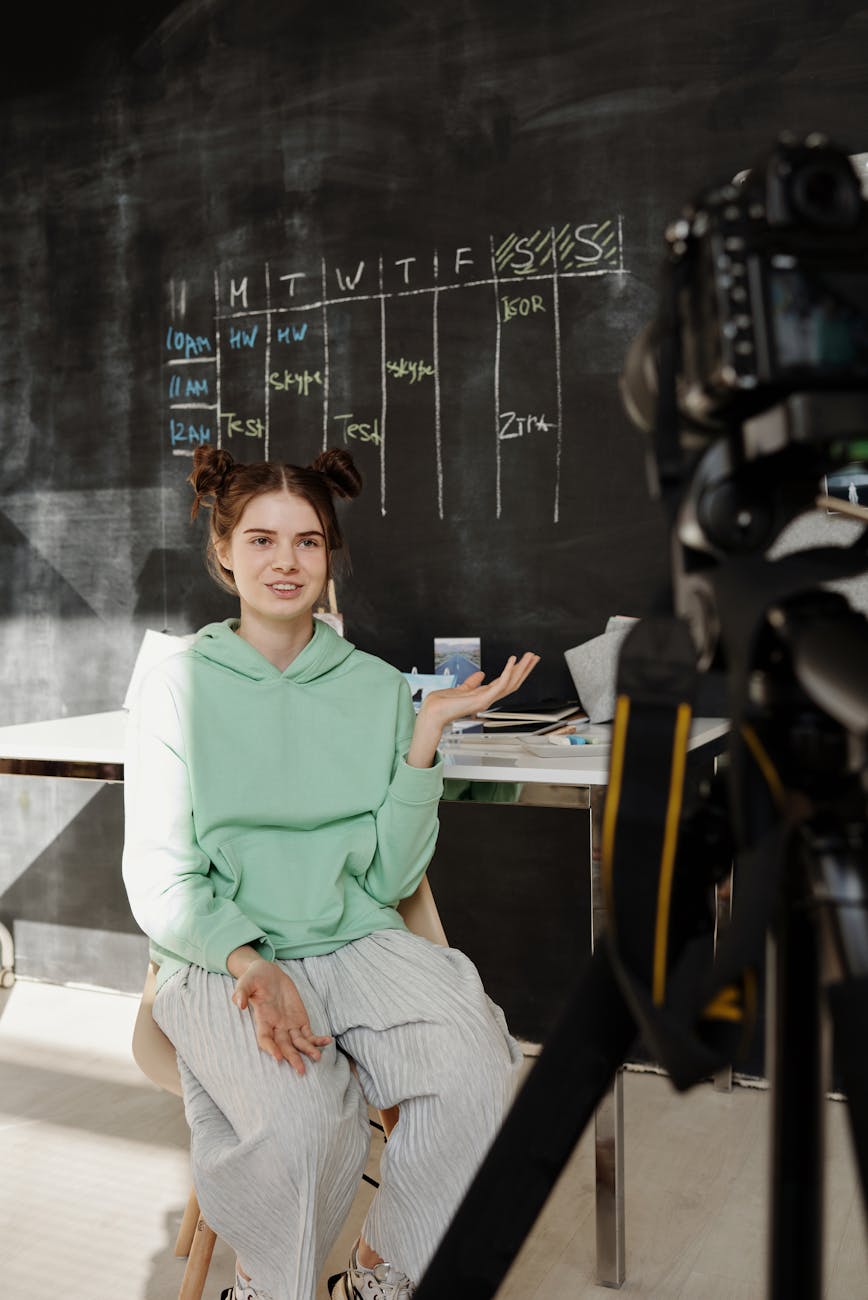Educational Video Production
Educational videos play a huge part in grabbing the attention of learners and making the learning stick. When you’re thinking about making these videos, focus on two biggies: making sure the videos are top-notch and really getting to know who you’re aiming them at.
Importance of Quality Videos
Getting that video quality up to scratch is key to getting your point across and keeping folks watching. Studies show that good educational videos do wonders for keeping students interested and helping them remember stuff. Kids are more into the topics, and teachers notice those learning boosts too.
One thing you gotta keep an eye on is how long your videos are. People are more likely to finish watching shorter videos. The longer they go on, the more people drop off. So, keeping those educational videos short and sweet is the way to keep folks involved and remembering what they see.
About 90% of teachers say they want educational video clips under 10 minutes for the classroom, and around half of them prefer videos that last 2 to 5 minutes. This tells you just how important it is to keep things short and to the point in those classrooms (Boclips).
Target Audience Analysis
Knowing your audience is the secret sauce of making educational videos. You gotta dig into who they are, what they like to study, and what keeps them interested. This info is your ticket to cooking up content that hits the spot for them.
For businesses in Toronto on the hunt for the best video production services, digging deep into an audience analysis will show them just what kind of videos will click with who’s watching. When you know what your viewers prefer and need, you can whip up content that matches up with their learning quirks and interests.
Looking into your target audience means thinking about what they want to learn, what they already know, and the best ways to teach them so they’re not just watching but really understanding. By doing this, you can put together educational videos that not only teach but also motivate and drive folks to meet their learning goals.
Maximizing Engagement with Videos
In the world of making videos for teaching, keeping folks glued to the screen is a big deal for companies wanting to dish out useful stuff. Two big-time tricks for getting folks into educational vids are keeping them short and using cues wisely.
Video Length Matters
Turns out, quick and snappy videos—ideally under 6 minutes—really grab students’ attention and help them learn better. If videos drag on, though, interest starts to fizzle, making those shorter ones way better for remembering stuff. A whopping nearly 100% of students tune in till the end for quick vids, proving that keeping things brief is a winner for teaching (Boclips).
| Video Length | Student Engagement Rate |
|---|---|
| Less than 6 minutes | Higher engagement and completion rates |
| 6-9 minutes | Engagement starts decreasing |
| Over 12 minutes | Big drop in staying tuned |
For companies making educational content, hitting the sweet spot with just the right info without losing the audience is key. By dishing out bite-sized, punchy videos, businesses can make learning stick and keep folks coming back for more.
Utilizing Signaling in Videos
Another cool trick to keep viewers hooked on educational vids is throwing in some signaling moves. This means using sights and sounds in the video to make important stuff stand out or guide viewers through the content.
Research says that spicing up educational videos with these cool cues can really boost understanding and help the info stick (NCBI). By adding things like text highlights, little animations, or sound vibes, companies can whip up a more lively and engaging learning ride for their crowd.
Tossing in these signaling techniques doesn’t just nail home the big points but also helps keep eyeballs on the screen all the way through. So, companies diving into this video-making thing can use these signaling tricks to keep their audience locked in and make sure the important teaching points hit home.
For companies aiming to make their educational vid content really pop, keeping it short and using those signaling tips are golden moves for jazzing up engagement and making learning a fun ride for their budding learners.
Enhancing Learning Outcomes
Learning through videos is now the go-to strategy for effective education, applauded for its ability to boost knowledge retention. To squeeze the most out of this approach, two major tweaks can make all the difference: cutting out the fluff and making sure everyone feels included in the learning process.
Weeding Extraneous Information
Chopping out the unnecessary stuff from educational videos is like giving learners a clear, straight path through a dense forest. Get rid of the distracting background tunes and cluttered visuals, and you’ll lighten the mental load on students. With less brainpower wasted on distractions, students focus better on what’s truly important, soaking up and passing along what they’ve learned as if they’re expert sponges (NCBI).
When the distractions are minimized, learners find it easier to hone in on the core of the educational content. This streamlined focus transforms videos into powerful learning tools, encouraging better engagement and making whatever’s being taught stick like glue.
Inclusive Modality Learning
Inclusive modality learning gives educational videos that little extra something to perk up learners’ attention. It involves using signposts like on-screen text, symbols, or visual cues to underline significant parts of the video. These handy hints help steer learners’ focus, ease the mental strain, and boost their involvement with the material (NCBI).
When these little pointers are sprinkled throughout the video, educators get a nifty tool for helping students remember the key bits and link what they’ve learned to new ideas. This tactic meets diverse learning needs and makes the learning journey smoother and more effective for everyone.
By cutting the fluff and embracing inclusive techniques, Toronto’s video production pros can put together educational clips that not only grab viewers’ attention but also skyrocket learning outcomes. Focusing on quality and effectiveness in educational videos allows these creators to leave a lasting educational mark, giving students the valuable knowledge they’re after.
Effective Video Creation Strategies
Crafting educational videos that stick with viewers isn’t just about pointing a camera and talking—it’s a plan. To really connect and push the learning envelope, get them into it with interaction and collaborative efforts.
Get Hands Dirty with Interaction
Think of interaction as the secret sauce to spice up any educational video. Toss in some quizzes, polls, or those cool clickable graphics and you’ve got folks not just watching but joining in the fun. This approach isn’t just about fun; it helps them remember what they’re learning, accommodating all sorts of learning styles — from the visual peeps to the hands-on crowd.
And here’s a kicker: science backs this up. According to research found on NCBI, attention tends to wander the longer the video runs. So, keeping it short and interactive not only keeps them in their seats but also helps them soak up the info better.
Learning Together is Better
Bringing viewers into an active learning environment changes the game. When they dive into discussions or solve problems together, they don’t just memorize — they understand. Videos that spark conversations or make them apply lessons on the spot pave the way for learning that’s more than skin-deep.
Boclips nails it down in one of their studies: shorter, interactive videos score better on engagement and exams compared to their long-winded cousins. It’s all about making them part of the action, helping them see how what they learn fits into the bigger picture.
When businesses, like those in Toronto, embrace these interactive and collaborative methods, they’re not just creating videos; they’re crafting experiences that stick. These tactics don’t just captivate learners—they empower them, making educational content both memorable and meaningful.
Impact of Technology in Education
Education nowadays is feeling a makeover, thanks to tech. The digital infusion in schools has given a good old shake-up to those dusty classrooms and thrown in a splash of excitement for both teachers and students. Learning is no longer just about books but about experiencing education in a much more vibrant and hands-on manner.
Transformation in Learning Spaces
Classrooms have traded their chalkboards for smart screens, and teaching has become a lot cooler. Purdue University highlights that teachers are moving away from just lecturing like they’re at a podium all alone to more of a coach style, guiding students as they actively participate. This shake-up lets students take charge and be more involved in their learning, with a bit of tech help like interactive lessons that suit different learning styles.
Learning isn’t just a one-way street anymore. It’s more of a roundabout where students jump in, collaborate, and tech helps bring them closer to the knowledge they need.
Empowering Teachers and Learners
Teachers and students now get to enjoy a whole new level of classroom energy. It’s not just about going to school anymore; it’s about creating a personal learning adventure. Teachers can craft lessons that feel more like an engaging story, using resources like Khan Academy, MOOCs, and podcasts to bring lessons to life.
And forget about borders. Tech lets students connect with those halfway across the world, linking up with experts through video chats and shared online spaces like Google Docs. This virtual mingling doesn’t just smash classroom walls but encourages knowledge to zoom around.
Take, for instance, Purdue University’s Online Master of Science in Learning Design and Technology. It’s a stellar example of how students are prepping to lead the charge in education innovation. This program equips them with the sizzle and skills to bring tech-savvy approaches into learning environments.
In the end, technology is like a passport to a worldwide classroom. It’s opening doors, breaking down barriers, and giving both teachers and students the kind of learning adventure they can really get into, regardless of where they’re from or what time it is. They’ve turned education into a global, exciting journey where the only limit is your Wi-Fi signal.
Future of Online Education
As technology shakes up the education game, Toronto businesses are eyeing the massive potential behind online learning. With some powerful tools in play, two standout features are the expansive reach of educational tech and the impact of the Master of Science in Learning Design and Technology program.
Global Reach of Educational Technology
In today’s world of classrooms that fit in your pocket, teachers can whip up materials and connect with students like never before. With the Internet everywhere and smart gadgets in every hand, we’re stepping into a new era where learning happens anytime, anyplace (Purdue University).
For Toronto businesses, this is a golden opportunity. By weaving educational tech into their training programs, they can connect with more folks, spark major learning moments, and break through any geographical barriers. Online platforms gift companies with a vast library to learn from, helping them stay sharp and industry-ready.
Master of Science in Learning Design and Technology
If you’re thinking of diving into the tech-savvy side of education, Purdue University’s Online Master of Science in Education in Learning Design and Technology is calling your name. It’s a chance to dig into the tech that’s reshaping how we learn, paving new paths for educational progress (Purdue University).
This program gives you the toolkit to design learning experiences supercharged with technology. Toronto professionals taking this leap can master how to create engaging content, interactive materials, and smart strategies for assessments.
For businesses wanting to beef up their educational offerings, tapping into the pool of graduates from this program is a no-brainer. Equipped with the latest strategies and know-how, these experts can craft custom learning solutions to match an evolving workforce and audience.
By grabbing hold of the endless reach of educational tech and advanced programs like the Master of Science in Learning Design and Technology, Toronto companies can step into the spotlight of online education. This visionary move not only keeps them ahead in the industry but also fuels innovation and excellence in learning endeavors.





